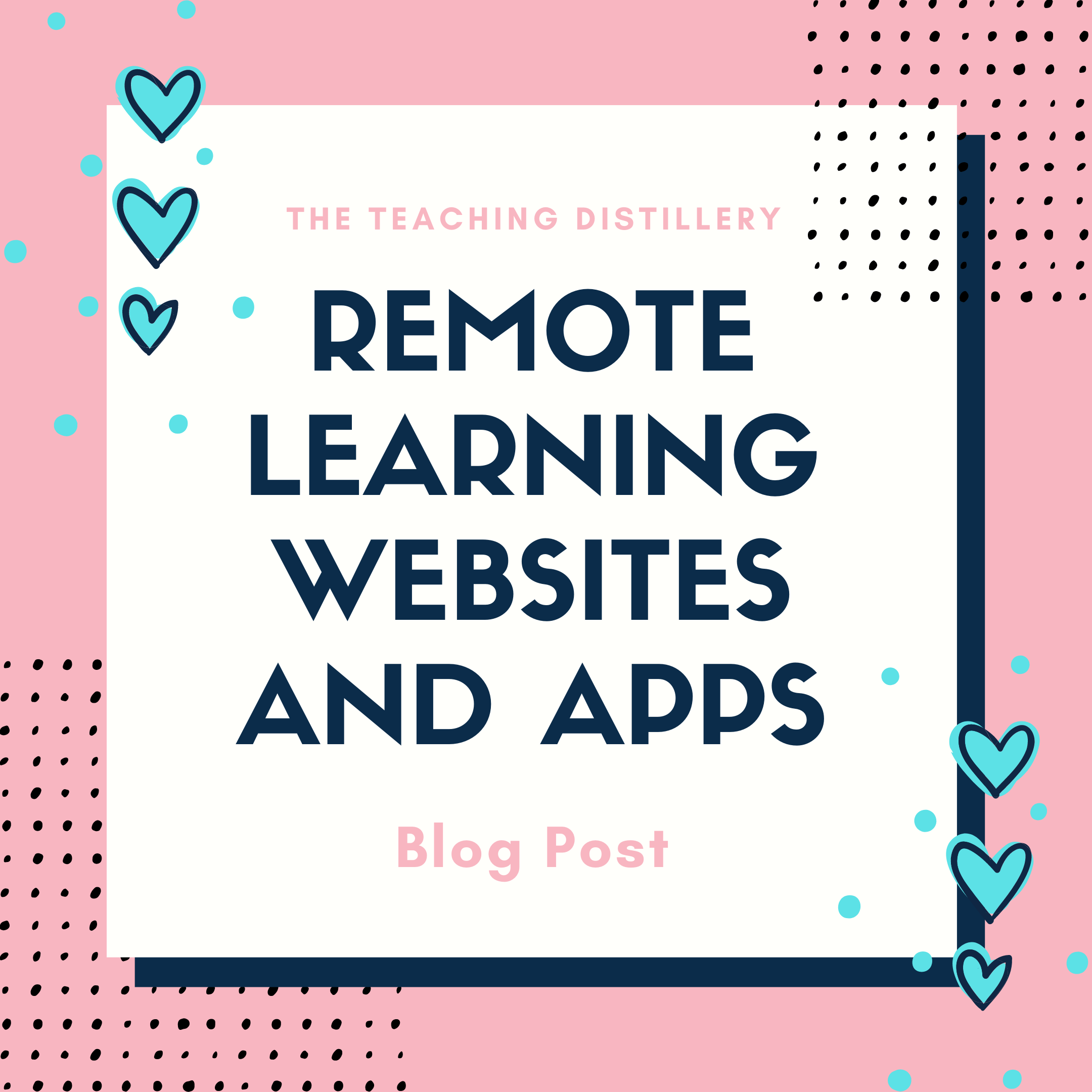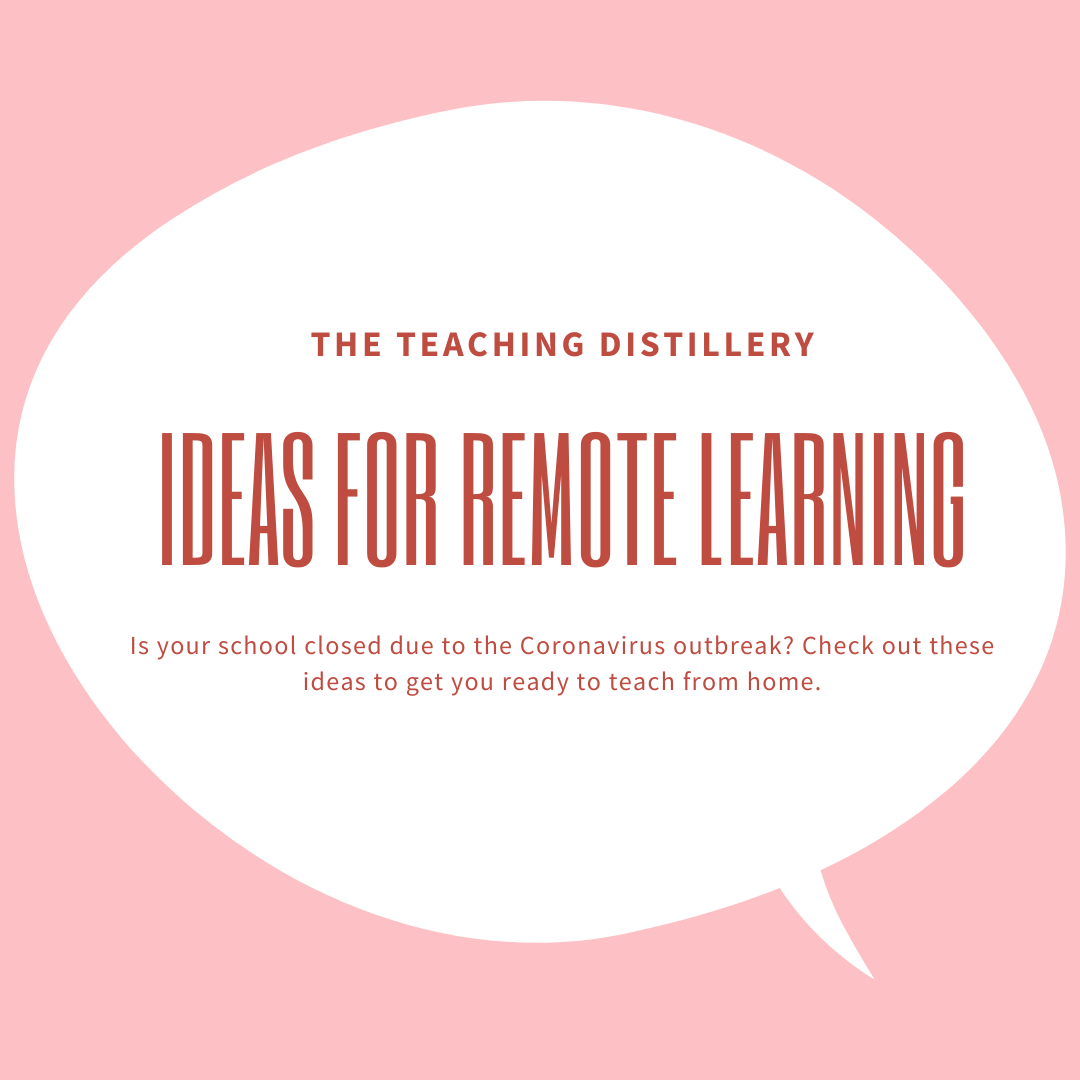In an article that Schmoker wrote for ASCD, he says that one of the impactful things teachers can do for students is to have them read for a minimum of 60 minutes and write for a minimum of 40 minutes every day in all subject areas. Unfortunately, many students spend class time in aimless group activities such as completing worksheets, cutting, coloring, and gluing. Additionally, reading assignments have been lowered several grade levels. If there ever was a time to switch things up and do them differently, now is the time. Here is Schmoker’s minimalist standards framework:
Read MoreThere are so many options and choices for remote learning these days. It can be overwhelming and daunting to find them, learn how to use them, and then have our students utilize them in class or through remote learning. Here are a few of our favorite websites to use for distance learning.
Read MoreWill your school district be teaching remotely, hybrid teaching, or full return to school? My school district has decided after much deliberating to start school remotely. So, I started to buy some helpful items to make remote teaching easier this time around.
Read More2020 will definitely be a year to remember, not only for the Coronavirus pandemic causing mass shut downs and shelter in place orders that have swept the world, but also for the vast inequalities it has helped to shed light on. A disproportionate amount of Black Americans have died from COVID-19 than whites or other ethnic groups. Black Americans represent 13.4% of the US population, but over 60% of the deaths from the virus. How is this even possible? After all, “The virus knows no race or nationality; it can’t peek at your driver’s license or census form to check whether you are black. Society checks for it, and provides the discrimination on the virus’s behalf. The effects of that discrimination are found in the morgues.”
Disparities could be due to inequalities in access to health care. However, a much more likely reason is the systematic, structural, and institutionalized racism that has plagued this country for the past 400 years. To exacerbate these glaring inequalities is the continued news cycle of Black people dying at the hands of police and white supremacists. And now, months later, an uprising has begun.
Read MoreDuring this crazy time we are living in, we decided pretty early on that we wanted - no, what we needed - our students to do was to be writing daily while at home. We wanted them to record their thoughts, feelings, and experiences while sheltering in place. We aren’t alone. Our favorite teacher/ author, Kelly Gallagher also is having his students writing from home.
We knew that we wanted to create something that students could look back on for years to come and that reflected their unique perspectives and interests. We wanted to create a journal that we could share remotely that focused on student centered reflections of this unprecedented time period.
Read MoreAs teachers, we know that one of the most important things that we can do for our young children is to read to them each and every day. Bedtime is the most important time in our household. We plan on getting our toddler to bed 30 minutes early so we can read to them. Not only can reading help your kiddos learn sounds, words and language, it also helps to develop early literacy skills. Reading can also help children to learn the value of books and stories. We know that reading helps to spark our student’s imagination and stimulate curiosity- the same goes for even the youngest of our children. Not to brag, but our toddler has a killer vocabulary. Reading to our toddler helps to develop their brain, their social skills and helps to improve their communication skills.
Read MoreOne of the standards that we find that our students need the most growth is Speaking and Listening. Year after year, that strand is marked the lowest in our CAASPP scores. There are several things that we do to improve our students’ listening comprehension as well as speaking skills. Read on to learn more…
Read MoreTo make your teaching life a little easier, we have created lessons that focus on directly teaching your students informational text reading strategies.
What is the difference between a good teacher and a great teacher? Well, this question comes up during teacher interviews sometimes, and it is a tough question to answer just off the top of your head. I’ve been giving it some thought, and here is what I have come up with:
Schools can be an ideal place to support the social and emotional well being of students, and we can offer many opportunities to build resilience within our students. When students feel supported and understood, there are usually less discipline problems in classrooms, students can focus on their school work more readily, and students can begin to develop their communication skills.
Using many of the strategies created by Dr. Daniel Siegel, author of The Whole Brain Child, and Mindsight, as well as, The Yes Brain, and Dr. Joan Rosenberg, author of 90 Seconds to a Life You Love, we have compiled our tried and true strategies and resources when supporting our students’ emotional needs.
Read MoreWriting a personal memoir is clearly the more challenging piece of writing, and one in which brings value and clarity to a person’s life. We have taken our memoir writing unit and created activities and a presentation. You can find it in our Teachers Pay Teachers store.











